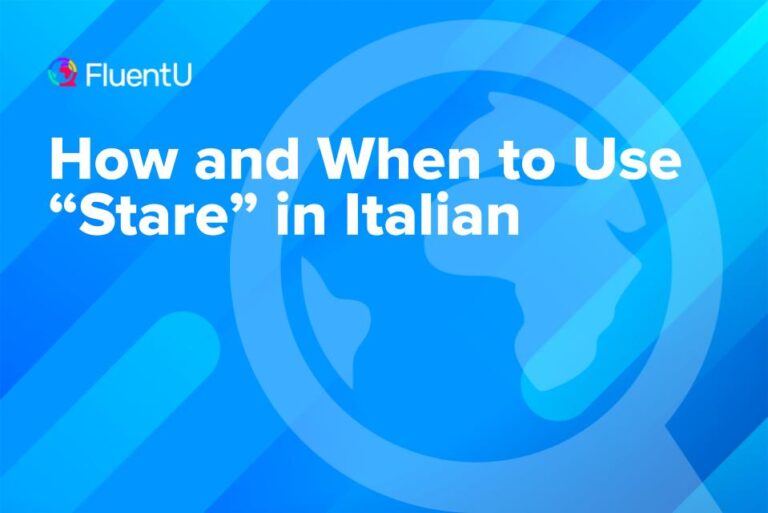Contents
- What Are Italian Articles?
- Italian Indefinite Articles
- Italian Definite Articles
- Example Sentences Using Italian Articles
- Important Rules About Italian Indefinite Articles
- Important Rules About Italian Definite Articles
- Where to Practice Italian Articles
- The Italian Article Quiz: Test Your Knowledge!
- And One More Thing...
The Easy Guide to Italian Articles
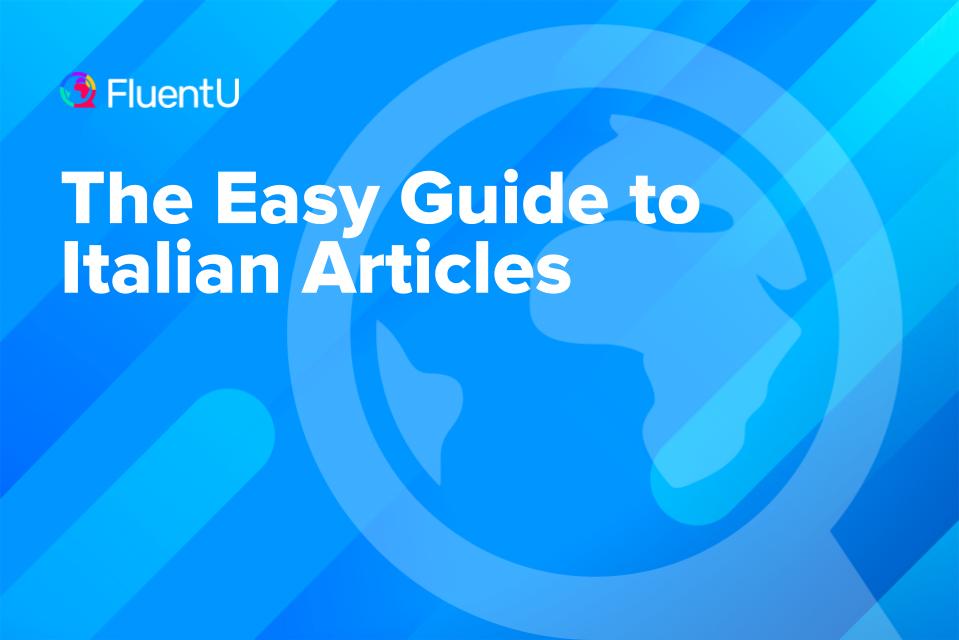
Articles in Italian are small words that precede nouns to indicate their gender and number.
Italian has 11 articles divided into two types:
- Definite articles (il, l’, lo, la, i, le, gli)
- Indefinite articles (un, una, uno, un’)
Definite articles in Italian are used to specify known nouns, while indefinite articles specify unknown or unspecified nouns.
Think about this same idea in English. “The dog” would refer to a dog that’s known to you, and “a dog” would refer to any old dog. It’s the same in Italian.
I know it sounds intimidating at first. All that work just to say “the” and “a/an”?
Well it’s not as confusing as it looks!
Read on to learn all about Italian articles, with lots of examples and all the necessary grammar rules, so you’ll never make an article mistake again.
Download: This blog post is available as a convenient and portable PDF that you can take anywhere. Click here to get a copy. (Download)
What Are Italian Articles?
In Italian, like in many languages, there are two types of articles.
- Indefinite articles denote a noun but don’t refer to a specific noun (think of “a” or “an” in English).
- Definite articles denote a specific noun (think of “the” in English).
In addition to these two types of articles, Italian further categorizes articles in a way that English doesn’t: grammatical gender and number. In Italian, both types of articles change depending on the gender and number of the noun that follows them.
Italian Indefinite Articles
First thing’s first: indefinite articles are used to refer to a non-specific noun. For example, this is the equivalent to saying “a duck” or “an apple” in English. It can be any duck and any apple.
In contrast to English’s two indefinite articles (“a” and “an”), Italian has four indefinite articles:
1. un
Un is usually the go-to indefinite article for singular masculine nouns. It is used before words that begin with a vowel and most (but not all) consonants.
Examples:
2. uno
Uno, on the other hand, is used in more specific (but still non-specific) circumstances. It is used before words that start with s + a consonant or words that start with z, x, y, gn, ps, or pn.
Examples:
- uno zaino — a backpack
- uno strumento — an instrument
3. una
With feminine nouns starting with a consonant, you use una.
Examples:
4. un’
If the feminine noun in question starts with a vowel, you use un’ instead. That apostrophe replaces the “a” on the end, almost like when you take out a letter to form a contraction like “don’t” from “do not.”
Examples:
- un’amica — a female friend
- un’università — a university
Italian Definite Articles
Unlike an indefinite article, definite articles are used to refer to a specific noun.
For example, this would be like saying “the duck” or “the apple” in English, which implies that you’re speaking about a specific duck or apple.
While there’s only one of these in English (“the”), there are seven definite articles in Italian.
4. il
You use il for masculine and singular nouns.
Benito Mussolini, during his time, was called Il Duce (The Leader), referring to his position in government. The Cathedral in Florence is called Il Duomo (The House).
Il is the go-to article for those regular masculine and singular nouns. Think of buff, single guys.
Examples:
- il centro — the center
- il mare — the sea
- il ristorante — the restaurant
- il dottore — the doctor
- il professore — the professor
- il libro — the book
- il terrazzo — the terrace
5. l’
The definite article l’ is used when a vowel is involved. When your masculine, singular word starts with a vowel, you pair it with l’.
Native speakers of any language try to find ways to make their interactions smoother and help words naturally roll off the tongue. An opportunity arises when a noun starts with a vowel. Italians simply save energy and skip a few movements of the tongue: Instead of using the article il for these words, they just use l’ and simply slide into the noun.
Examples:
- l’ulivo — the olive tree
- l’oro — the gold
- l’argento — the silver
- l’angelo — the angel
- l’occhio — the eye
- l’albero — the tree
- l’arancio — the orange tree
6. lo
For masculine, singular nouns that start with the following letters, we use the article lo: s (followed by a consonant), z, y, sp, pn and gn.
You’ll notice that this group is a special case. Any other word that begins with a consonant uses il, but these six require a lo.
- lo studio — the office
- lo zio — the uncle
- lo sci — the ski
- lo sport — the sport
- lo zucchero — the sugar
- lo yen — the yen
- lo psicologo — the psychologist
- lo gnocco — the dumpling
- lo pneumatico — the tire
7. i
The article i is the general identifier for masculine, plural nouns.
Turning things plural in Italian is a pretty straightforward affair. You change the ending of the noun and tag it with the proper definite article.
To form a masculine plural noun, two things need to happen. First, drop the l in il so it becomes the definite article i. Then convert the –o found at the ends of masculine nouns (libro, tavolo, terrazzo) into an -i.
So you now have two i’s, one as the definite article, and the other one at the end of the noun. In other words, for plural forms of masculine nouns, you’re making it rain i’s.
Examples:
- i libri — the books
- i ragazzi — the boys
- i vini — the wines
- i cavalli — the horses
- i negozi — the shops
- i gatti — the cats
- i cani — the dogs
8. gli
The article gli is used as the plural form of the lo. That means you use it before the plural versions of words that begin with s (followed by a consonant), z, y, sp, pn and gn. You also use gli before nouns that begin with vowels.
Just like the previous category, in order to make the nouns plural, you change the ending from -o to -i.
Examples:
- gli studenti — the students
- gli gnomi — the gnomes
- gli psicologi — the psychologists
- gli pneumatici — the tires
- gli zaini — the backpacks
- gli angeli — the angels
- gli alberi — the trees
9. la
Now, let’s get to “la la land”! La is used for singular words that begin with a consonant.
It’s actually the go-to identifier for anything grammatically feminine and single (like a potential girlfriend). For example, when you want to say “the good life,” you say la dolce vita.
Examples:
- la strada — the street
- la testa — the head
- la guardia — the guard
- la pera — the pear
- la terra — the earth
- la madre — the mother
- la finestra — the window
10. l’
For any feminine, singular word that starts with a vowel, you use l’.
This, again, is an example of how native speakers game the language and make it easier on themselves. When a feminine noun begins with a vowel, instead of using la, just drop the -a and use l’.
So, instead of saying la acqua, which sounds a bit redundant and takes a bit longer, you simply say l’acqua and go on with your busy day.
We’ve talked about using l’ earlier using masculine nouns. Here, let’s see examples for feminine nouns.
Examples:
- l’ora — the hour
- l’auto — the car
- l’ananas — the pineapple
- l’oasi — the oasis
- l’austerità — the austerity
- l’idea — the idea
- l’eco — the echo
11. le
Le is the article for feminine, plural nouns. It replaces the la or l’ of the singular noun.
Can you guess what happens to the -a at the end of the singular noun (maestra, mesa, finestra)? You turn it into an -e. So this time, you’re making it rain e’s!
Examples:
- le sorelle — the sisters
- le amiche — the friends
- le farmacie — the pharmacies
- le ragazze — the girls
- le foto — the photos
- le case — the houses
- le ore — the hours
Example Sentences Using Italian Articles
Example sentences with indefinite articles
- Un amico viene a casa mia. — A friend comes to my house.
- Ho fatto uno sbaglio. — I made a mistake.
- Uso una penna per scrivere. — I use a pen to write.
- Ha parlato per un’ora. — She talked for an hour.
- Ho comprato un libro nuovo. — I bought a new book.
- Un insegnante sta entrando nella classe. — A teacher is entering the classroom.
- Un bambino ha trovato un tesoro nel giardino. — A child found a treasure in the garden.
- Oggi voglio fare un viaggio in montagna. — Today I want to take a trip to the mountains.
- Un gatto nero sta attraversando la strada. — A black cat is crossing the street.
Example sentences with definite articles
- Il cane mangia. — The dog eats.
- I ragazzi giocano a calcio. — The boys play soccer.
- Ho visto lo specchio. — I saw the mirror.
- Lei ha mangiato gli gnocchi. — She ate the gnocchi.
- La ragazza balla. — The girl dances.
- Abbiamo toccato le farfalle. — We touched the butterflies.
- Dov’è l’uomo? — Where’s the man?
- L’isola è bella. — The island is pretty.
Important Rules About Italian Indefinite Articles
- DO use them when you would use “a” or “an” in English
In general, it is appropriate to use an indefinite article in Italian in the same situations you would use it in English: when you want to say “a” or “an.” As you saw earlier, it isn’t always a direct one-to-one translation of “an” to “un,” for example, but the idea is the same. If you are referring to something indefinite, you usually use the indefinite article. - DON’T use them with some numbers
There are some cases where we might use an indefinite article in English, but not in Italian. With some Italian numbers, for example (but not all of them!), you would leave out the indefinite article and just use the word as-is. This is most commonly done with cento (hundred) and mille (thousand).cento miglia — a hundred miles
mille volte — a thousand times - DON’T use them in an expression that starts with che
There are several expressions in Italian that start with the word “che.” These are usually an exclamation of some sort, and they never take the indefinite article, even if it would be present in the English translation. For instance:
Che peccato! — What a shame!
Che idiota! — What an idiot! - DON’T use them when saying “few” or “a lot”
In English, we don’t think twice about using the phrase “a few” or “a lot.” We always take it for granted that the “a” is in there, but in Italian, that poor “a” goes away:qualche mela — a few apples
molti libri — a lot of books
Important Rules About Italian Definite Articles
- DO keep in mind that the definite article is used quite a bit more than in English.
For example, in English, we might be able to say “I like bread” with the definite article “the” missing from the phrase before the word “bread.” However, in Italian, we must add that definite article, to make mi piace il pane (I like bread). - DO use the definite article with days of the week and the months of the year. So, to say “I play soccer every Sunday,” we’d say la domenica gioco il calcio.
- DO add the definite article in addition to the possessive pronoun in Italian. For example, to say “my book” in Italian, we’d get il mio libro where il is the masculine, singular definite pronoun and mio is the possessive pronoun.
- DO combine Italian definite articles with prepositions
In addition to the masculine, feminine and plural forms of the definite articles in Italian, definite articles also combine with certain Italian prepositions. Since this post focuses on articles, we won’t go into many details about prepositions here, so be sure to check out more information about Italian prepositions to get a fuller understanding of them.
When you use an article after a preposition in Italian, you make something similar to a contraction in English. For example, when placed together, the word “they” and the word “are” combine to become “they’re” in English. A similar process happens between prepositions and definite articles in Italian, too.
However, be careful! Unlike in English, most of these article and preposition contractions in Italian aren’t optional: they’re obligatory, and you must make such combinations when you use the two words next to one another.
Check out the most common combinations:
a (to)
- Ho dato la mela al cane. — I gave the apple to the dog.
- Ha dato la penna allo studente. — He gave the pen to the student.
- Lei non crede alla sua versione. — She doesn’t believe his version.
- Abbiamo fatto un regalo all’avvocato. — We gave a gift to the lawyer.
- Non tengo ai loro consigli. — I don’t care about their advice.
- Lui scrive agli amici. — He writes to his friends.
- Avete pensato alle case? — Did you think about the houses?
di (of)
- Ho bisogno del computer. — I need the computer.
- Questo è il cappello dello zio. — This is the uncle’s hat.
- Guarda la macchina della ragazza. — Look at the girl’s car.
- L’alveare è la casa dell’ape. — A hive is the bee’s home.
- Lei ha paura dei ragni. — She’s scared of spiders.
- È un regalo degli angeli. — It’s a gift from the angels.
- Ho trovato le borse delle ragazze. — I found the girls’ bags.
da (from)
- Ho preso lo zaino dall’armadio. — I took the backpack from the closet.
- Sono tornato dallo zoo. — I returned from the zoo.
- Lei viene dalla Francia. — She comes from France.
- Torno dall’Italia domani. — I return from Italy tomorrow.
- Andiamo dai signori Ferrari. — Let’s go to the Ferraris’ house.
- Noi siamo tornati dagli zii. — We returned from our aunt’s and uncle’s.
- Quando tornate dalle vacanze? — When do you return from vacation?
in (in)
- La gomma è nell’astuccio? — Is the eraser in the pencil case?
- La penna è nello zaino. — The pen is in the backpack.
- C’è ancora vino nella bottiglia. — There is still wine in the bottle.
- La scrivania è nell’ufficio. — The desk is in the office.
- Ci sono i fiori nei giardini. — There are flowers in the gardens.
- Vedi gli uccelli negli alberi? — Do you see the birds in the trees?
- Ci sono sostanze chimiche dannose nelle sigarette. — There are harmful chemicals in cigarettes.
su (on)
- La bottiglia è sul tavolo. — The bottle is on the table.
- La ragazza riflette sul suo sbaglio. — The girl reflects on her mistake.
- Ho trovato i documenti sulla scrivania. — I found the documents on my desk.
- Dove sono i libri sull’amore? — Where are the books about love?
- Il ragazzo pesa sui quaranta chili. — The boy weighs about 40 kilograms.
- Concentrati sugli alberi! — Concentrate on the trees!
- Ci sono volute sulle sei ore per fare l’esame. — It took about six hours to take the exam.
con (with)
- Ho camminato col professore. — I walked with the professor.
- La donna giocava coi cani. — The woman was playing with the dogs.
Where to Practice Italian Articles
Now that we’ve mastered the Italian articles, we should practice them! Here are a few places where you can do this:
- Lezioni di Italiano has a pretty comprehensive quiz of the indefinite and definite articles.
- Listen to Italian speakers using these articles in action through authentic Italian videos on the FluentU program.
FluentU takes authentic videos—like music videos, movie trailers, news and inspiring talks—and turns them into personalized language learning lessons.
You can try FluentU for free for 2 weeks. Check out the website or download the iOS app or Android app.
P.S. Click here to take advantage of our current sale! (Expires at the end of this month.)
- Take a more in-depth look at the indefinite articles with this quiz from SoftSchools.com.
- To practice Italian articles with prepositions, try a quiz from the Online Italian Club.
- Lastly, you can practice choosing Italian articles “in the wild” (i.e. in context) in a quiz from One World Italiano.
The Italian Article Quiz: Test Your Knowledge!
So there you have it: Italian articles demystified and explained. Practice using articles today in Italian and see how impressed the locals are on your next trip to Italy.
Buon viaggio! (Have a good trip!)
Download: This blog post is available as a convenient and portable PDF that you can take anywhere. Click here to get a copy. (Download)
And One More Thing...
If you're as busy as most of us, you don't always have time for lengthy language lessons. The solution? FluentU!
Learn Italian with funny commericals, documentary excerpts and web series, as you can see here:
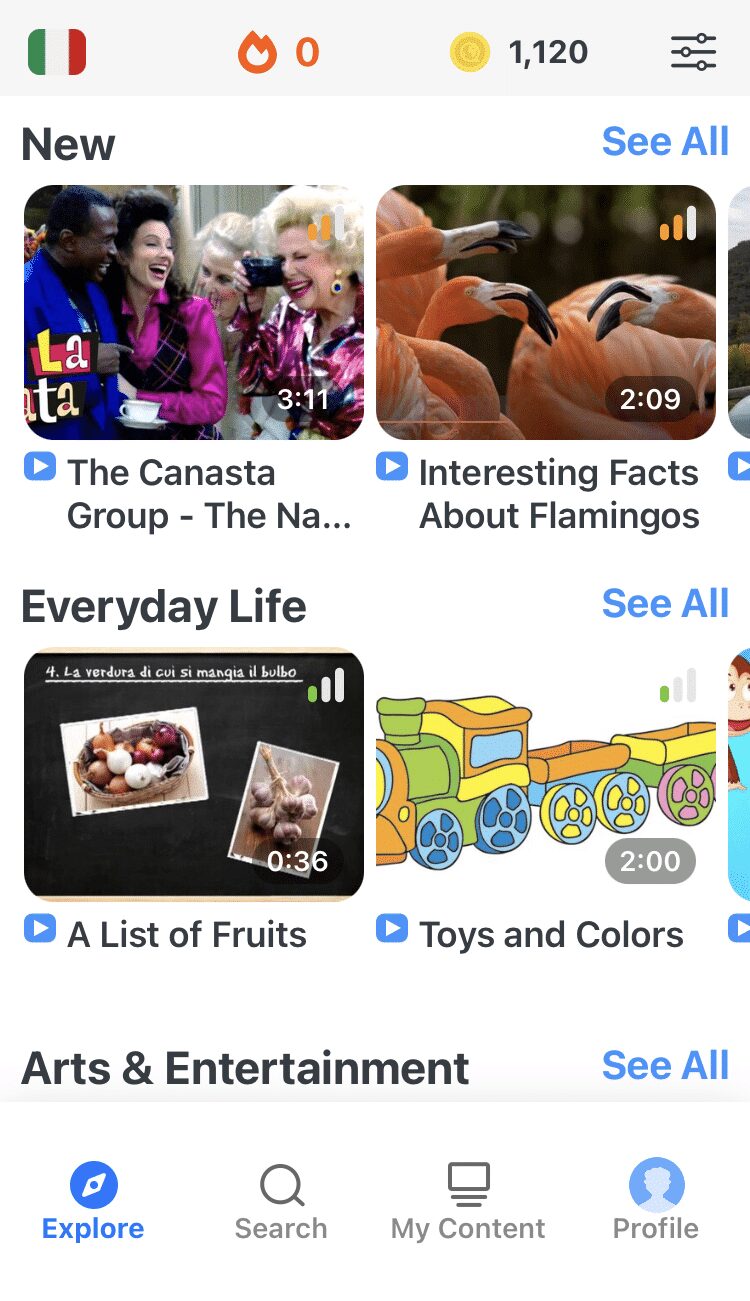
FluentU helps you get comfortable with everyday Italian by combining all the benefits of complete immersion and native-level conversations with interactive subtitles. Tap on any word to instantly see an image, in-context definition, example sentences and other videos in which the word is used.
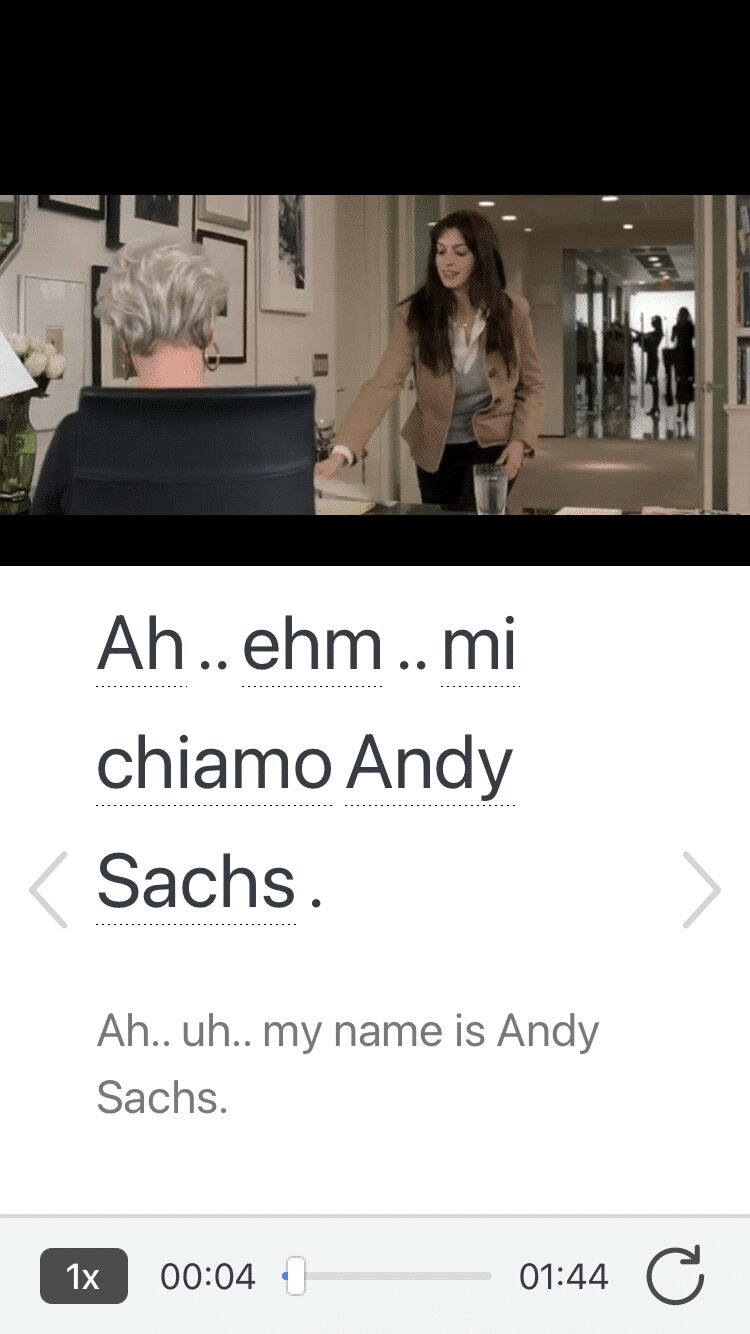
Access a complete interactive transcript of every video under the Dialogue tab, and review words and phrases with convenient audio clips under Vocab.
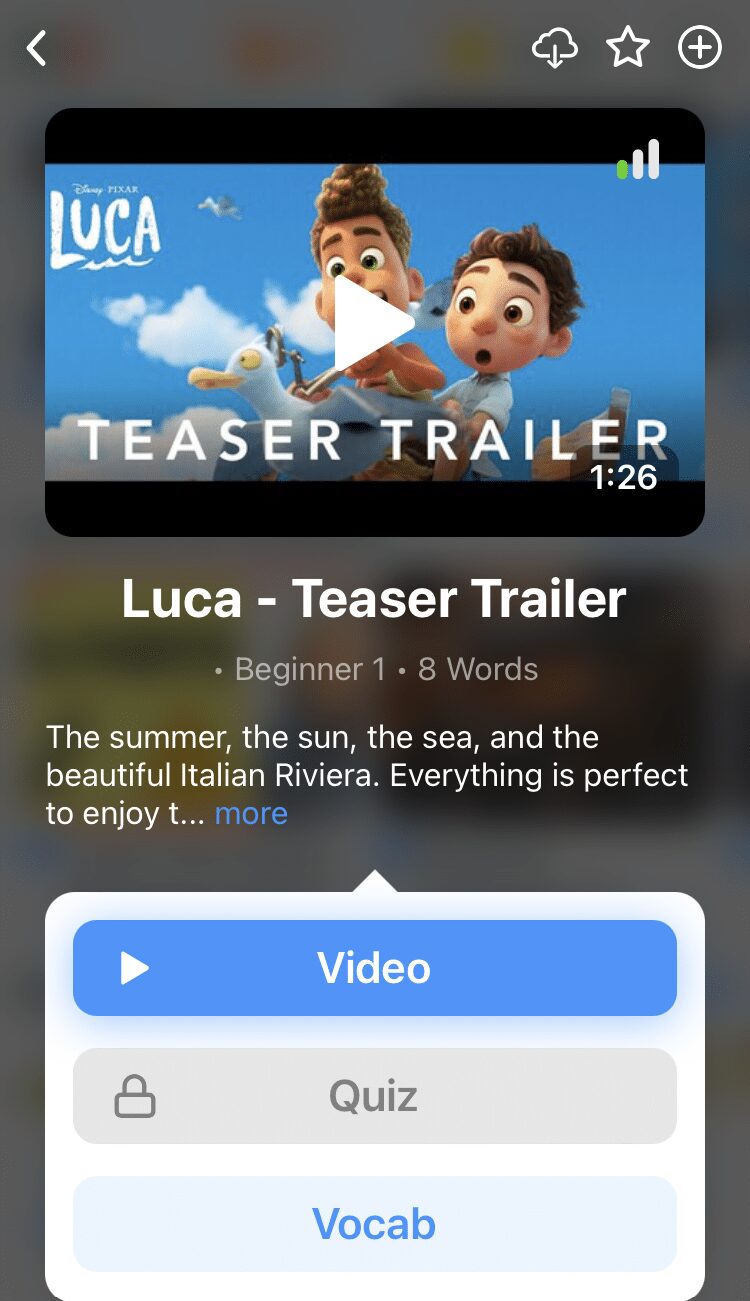
Once you've watched a video, you can use FluentU's quizzes to actively practice all the vocabulary in that video. Swipe left or right to see more examples of the word you’re on.
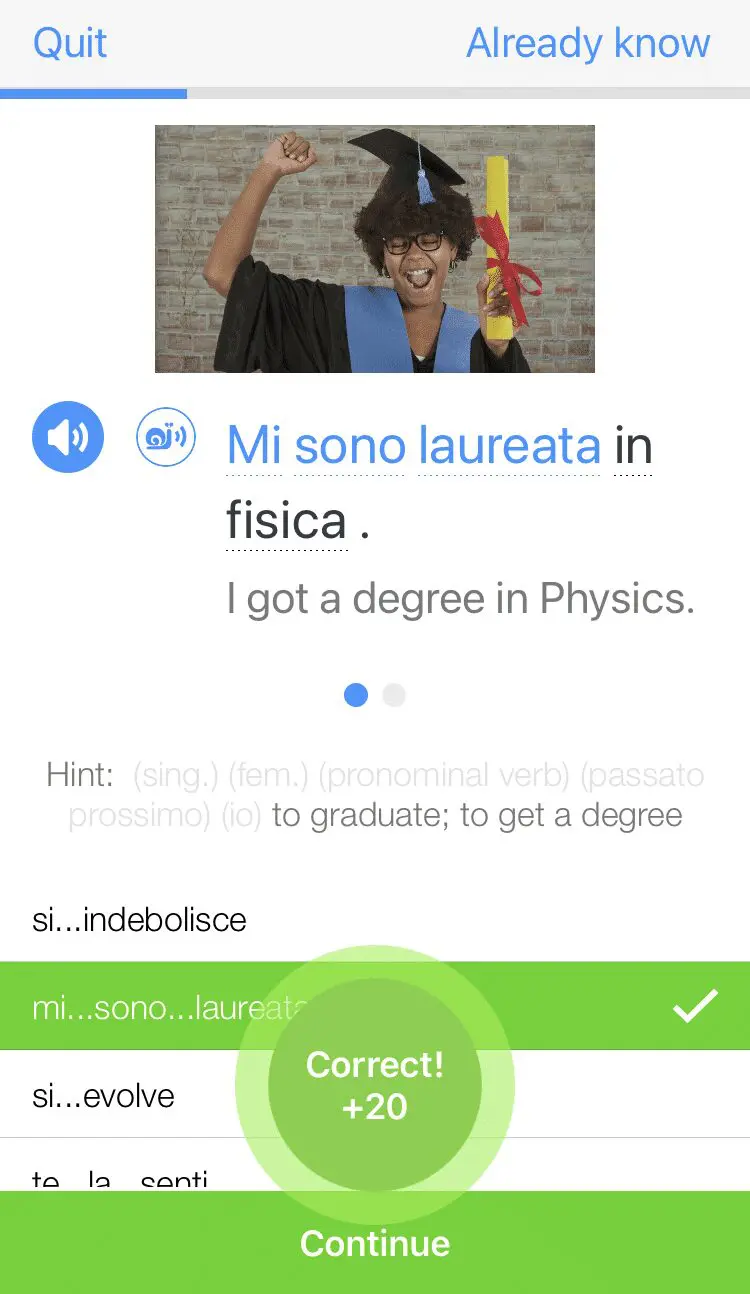
FluentU will even keep track of all the Italian words you’re learning, and give you extra practice with difficult words. Plus, it'll tell you exactly when it's time for review. Now that's a 100% personalized experience!
The best part? You can try FluentU for free with a trial.
Start using the FluentU website on your computer or tablet or, better yet, download the FluentU app from the iTunes or Google Play store. Click here to take advantage of our current sale! (Expires at the end of this month.)

